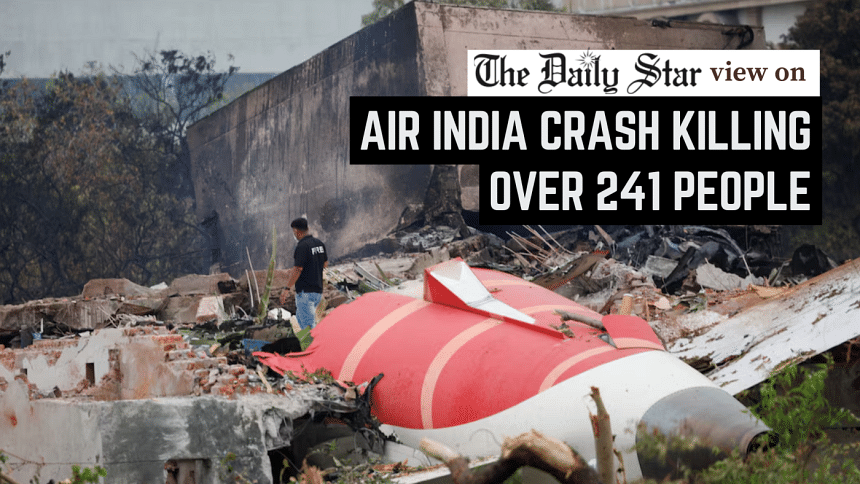Air India tragedy a wake-up call for aviation authorities

We are shocked and saddened by the devastating crash of an Air India plane that went down moments after taking off from Ahmedabad, Gujarat on Thursday, in what is now the world's worst aviation disaster in a decade. Our deepest condolences go out to the families and loved ones of the victims. Air India confirmed on Friday that all but one of the 230 passengers and 12 crew members on board were killed. Among the dead were also eight local residents, including four medical students, as the aircraft—a Boeing 787-8 Dreamliner—crashed into the residential quarters of a medical college in the area. The death toll may rise further as more details emerge.
India's Aircraft Accident Investigation Bureau (AAIB) is presently probing into what caused the crash, which could take some time, as such investigations involve multiple factors. Preliminary theories suggest that dual engine failure, bird strikes, or mechanical malfunction could be possible factors, with the aircraft failing to gain enough thrust after takeoff. After analysing footage of its crash, aerospace safety experts noted that the plane's landing gear was down at a phase of flight when it would typically be up, an anomaly that may have contributed to the loss of power. However, data from the black box, which was later recovered, can provide definitive answers.
This tragedy must serve as a wake-up call for those in the aviation industry, including in Bangladesh. The crash has shown what can happen if safety protocols are compromised—a reality that Bangladesh, with its own history of aviation safety concerns and irregularities, can ill-afford to ignore. Major stakeholders, including the Civil Aviation Authority of Bangladesh (CAAB) and Biman Bangladesh Airlines, the national flag carrier, have long faced criticism for repeated incidents of negligence and corruption. Only recently, we were alarmed to learn of an investigation from CAAB itself that uncovered numerous irregularities in pilot licensing and training programmes. These included serious breaches such as flying schools recommending pilot licences without students completing mandatory solo flight hours, falsification of flight records, and the use of unauthorised software in written tests. Shockingly, one pilot even certified himself. Despite being aware of such practices, CAAB has failed to take action.
Unless these systemic and deep-rooted issues are addressed, Bangladesh's aviation sector will remain vulnerable to the kind of tragedy we mourn today. The lesson here is clear: aviation safety must never be taken lightly. From airworthiness of aircraft to pilot qualifications, from pre-flight inspections to regulatory vigilance—every step must be treated with utmost seriousness. We urge aviation regulators and airline/airport operators in Bangladesh to reassess their standards and practices. If a disaster can happen to a major carrier like Air India, how confident can we be about averting a similar tragedy?

 For all latest news, follow The Daily Star's Google News channel.
For all latest news, follow The Daily Star's Google News channel. 









Comments